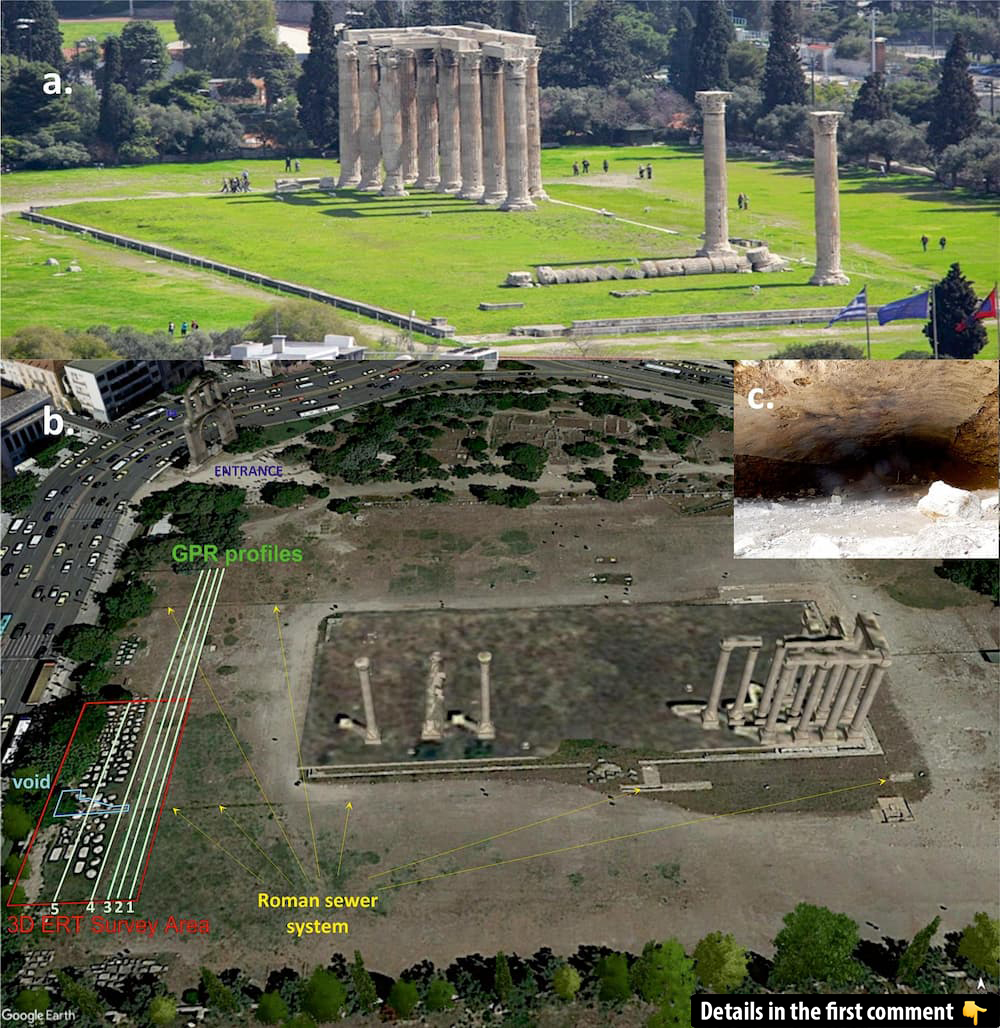Beneath the ancient columns of the Temple of Olympian Zeus in Athens lies a hidden world waiting to be discovered. Recent groundbreaking research has unearthed secrets long buried beneath the temple, offering a glimpse into the advanced engineering and water management systems of ancient Greece. These fascinating findings, made possible through cutting-edge geophysical technology, not only shed light on the temple’s original design but also reveal the challenges of preserving such an iconic monument for future generations.
Historical and Cultural Context
The Temple of Olympian Zeus, also known as the Olympieion, was one of the largest and most ambitious temple projects in ancient Greece. The construction of the temple began in the 6th century BCE under the rule of the Athenian tyrants, but it was not completed until the reign of Roman Emperor Hadrian in the 2nd century CE. Standing 17 meters tall, with 104 colossal Corinthian columns, the temple was an awe-inspiring testament to the power and glory of both Athens and Rome. It housed a monumental statue of Zeus, one of the largest cult statues of antiquity, designed by the famous sculptor Phidias.
Despite its grandeur, the temple fell into disuse after its completion and suffered from centuries of looting, neglect, and destruction. The surrounding area was used for quarrying materials, and earthquakes further damaged the already deteriorating structure. Today, only fifteen of the original columns remain standing, with one column having toppled during a storm in 1852. The continuing decay has led to ongoing restoration efforts aimed at preserving what remains of this architectural marvel.

The location of the Temple of Olympian Zeus, set in a seismically active region, has posed significant challenges to its preservation. Athens, situated on the edge of several fault lines, has experienced numerous earthquakes that have shaken the city and contributed to the structural degradation of the temple. Additionally, the land beneath the temple is composed of rocky Athenian schist, mixed with loose soil deposits from the now-hidden Ilisos River. These geological conditions, combined with the effects of centuries of human activity, have made it increasingly difficult to maintain the temple’s structural integrity.
Video
Take a look at this video to explore the grandeur of the largest Greek temple ever built.
Recent Archaeological Findings and Methods
Research and Technology Used
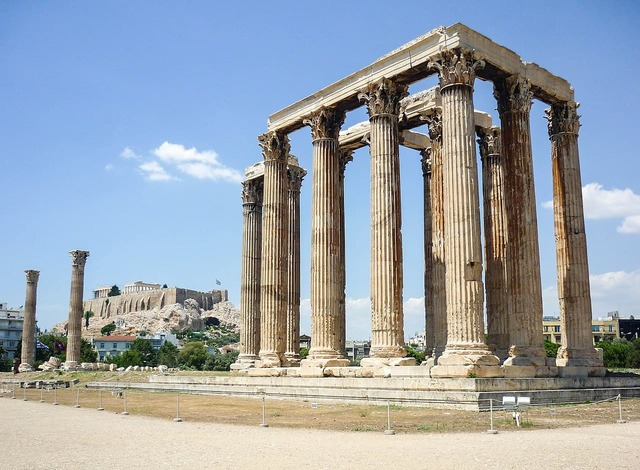
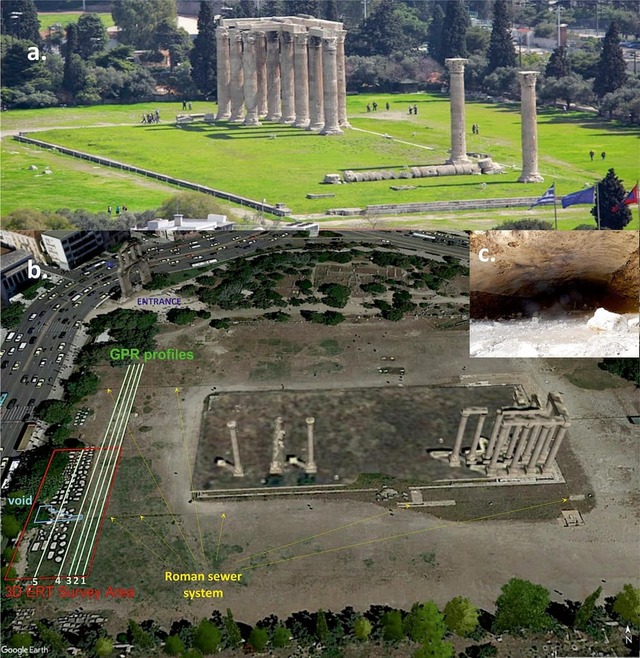
In an effort to better understand the challenges facing the temple, a team of researchers from the National Technical University of Athens conducted a groundbreaking study using advanced geophysical methods. The team used electrical resistivity tomography (ERT), ground-penetrating radar (GPR), and electromagnetic scanning to map underground features and assess the site’s stability. These innovative techniques allowed the researchers to identify hidden structures beneath the surface with unprecedented precision.
Discovery of Ancient Water Management Systems
Among the most significant discoveries was the revelation of a complex system of arched tunnels and water tanks beneath the temple. These underground features were part of the Roman sewer system that originally served the temple’s drainage needs. However, during the Greek War of Independence, General Makrigiannis repurposed these tunnels as places of prayer and refuge during his struggle against the Ottoman Empire. The discovery of these tunnels offers a rare glimpse into how ancient Greeks and Romans managed water and protected their monuments from erosion and flooding.

Additionally, radar imaging revealed the existence of large tanks and drains located to the north of the temple. These features were likely part of a sophisticated drainage system that was central to the temple’s original design, ensuring its protection from the harsh environmental conditions of the time. These discoveries shed light on the advanced engineering skills of the ancient builders and the strategic planning involved in the temple’s construction.
Structural Insights and Preservation Efforts
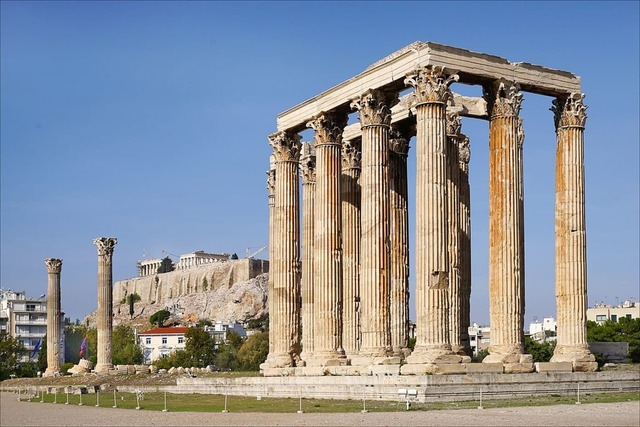
One of the most pressing challenges in preserving the Temple of Olympian Zeus is the unstable soil beneath the structure. In some areas, particularly on the western side of the temple, the land consists of soft, loose material that threatens the stability of the remaining columns. This discovery has led to the implementation of additional reinforcements in the foundations of the columns in these areas. The research team’s findings have provided invaluable data that will help guide ongoing restoration efforts and ensure the temple’s continued survival.
Since the temple’s construction, it has undergone numerous repairs and reconstructions. Today, the Greek authorities are working diligently to stabilize the remaining columns and prevent further deterioration. The use of modern engineering techniques, such as the installation of heavy metal structures and the reinforcement of weak foundations, has helped prevent further collapse and ensured the temple’s structural integrity. Additionally, the interdisciplinary approach taken by the researchers, combining archaeology, engineering, and geophysics, has proven crucial in addressing the challenges of heritage conservation.
The Role of Modern Research in Heritage Preservation
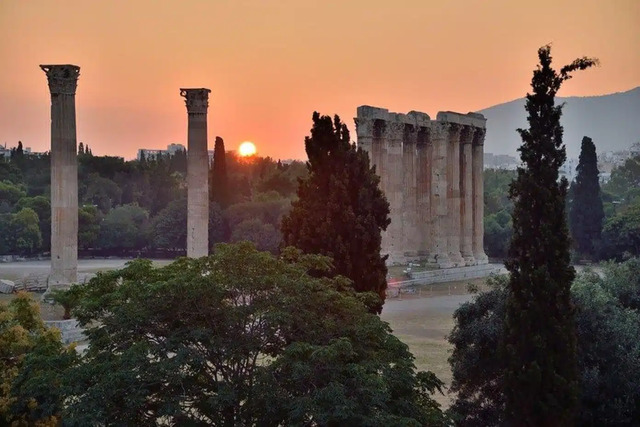
The collaboration between geophysicists, archaeologists, and engineers has been essential in uncovering the hidden secrets beneath the Temple of Olympian Zeus. By combining modern science with traditional archaeological methods, the researchers have been able to map out the ancient water management systems and structural features with remarkable accuracy. This interdisciplinary approach not only helps in the restoration of the temple but also provides valuable insights into ancient Greek engineering and architecture.
The success of this project has implications far beyond the Temple of Olympian Zeus. The methodologies developed by the research team can be applied to other archaeological sites in Greece and around the world, where monuments face similar threats from natural forces and time. The integration of cutting-edge technologies into archaeological research will continue to play a crucial role in the preservation of cultural heritage sites and our understanding of ancient civilizations.
Video
Check out this video for an in-depth look at the fascinating history of ancient Athens.
Conclusion
The recent discoveries beneath the Temple of Olympian Zeus have provided us with a deeper understanding of the temple’s original design and the advanced engineering techniques used by the ancient Greeks and Romans. The findings also underscore the importance of preserving such historical landmarks, not only as symbols of the past but as windows into the innovative spirit of ancient civilizations. As we continue to explore and uncover the secrets hidden beneath the surface, we gain a greater appreciation for the cultural legacy of ancient Greece and the enduring importance of preserving our shared history for future generations.
